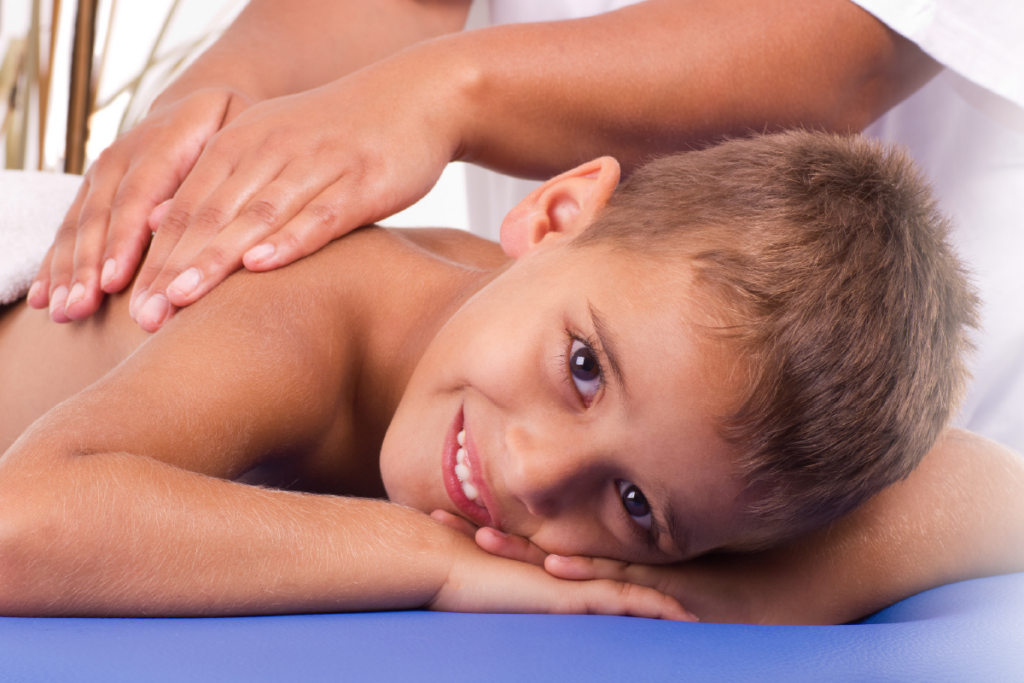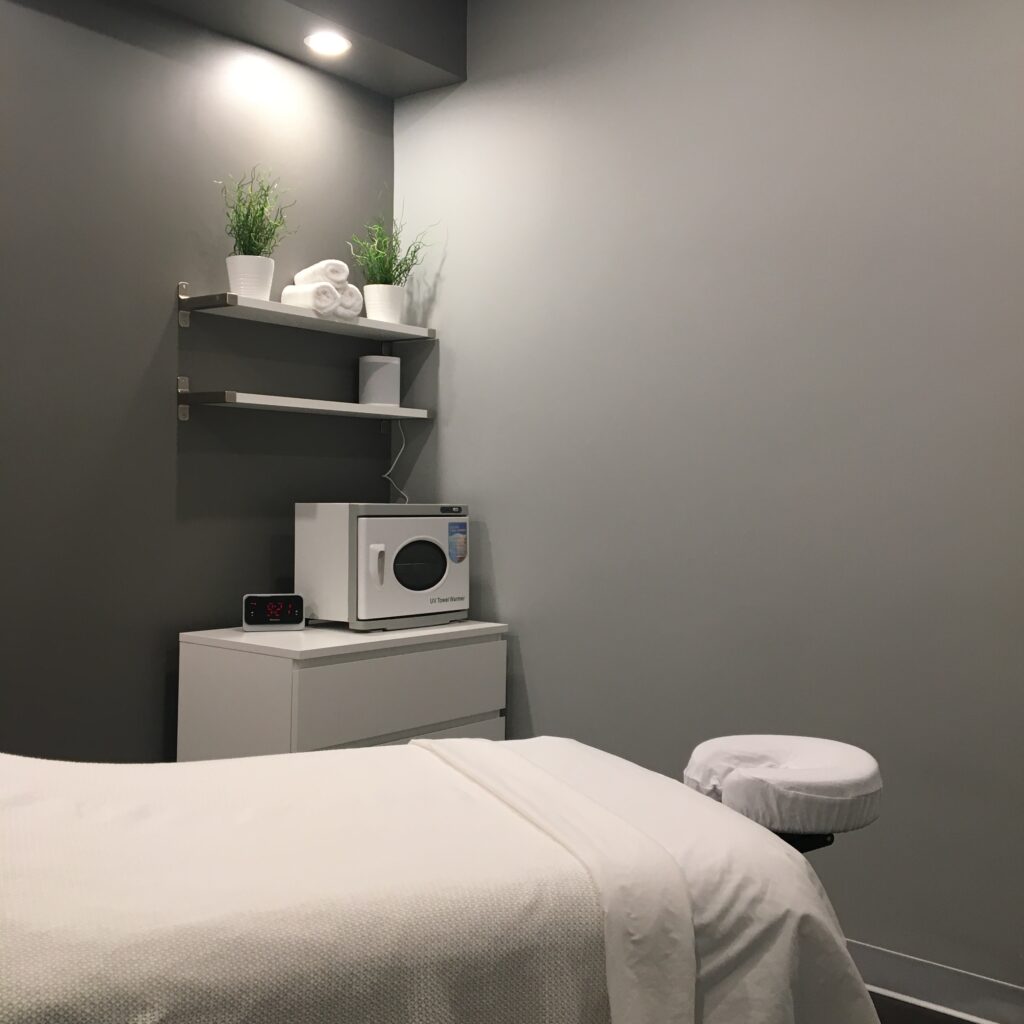The Benefits of Massage Therapy for Kids
Certain elements that make up your child’s day, such as spending time on their devices, going to school, or playing sports, may take a toll on their physical and mental wellbeing. Whether they face emotional stressors, muscle tension, or injury, it can be incredibly important to address these concerns, and one way to do so is through massage therapy.
Massage therapy can be a great tool for your child to incorporate into their lives as a way to speed up the healing process of an injury, relax sore tissues and muscles, enhance circulation, and promote relaxation. Similar to adults, children can benefit from incorporating self-care into their routine, and starting early can not only help get them into a self-care mindset, but they can also benefit from the therapeutic, physical effects of massage as they grow.
This article will take you through some of the benefits children can gain from getting a massage. Although massage therapy can be a safe and effective therapeutic practice for children, we always recommend getting the approval of your child’s doctor first.
Calming while Bonding
Massage can be a great way to provide feelings of safety and security for a child, and this is especially true for infants since touch is the very first sense they form. When your child feels anxious, experiences a strong emotional reaction like a tantrum or any type of response to a perceived (or real) dangerous situation, their sympathetic nervous system (SNS) kicks in, which triggers the “fight or flight” response. This is obviously not a fun feeling for anyone, let alone a child, to experience, which is why incorporating calming activities can be a great way to activate what is known as the parasympathetic nervous system (PSNS).
When the PSNS activates, the body experiences relaxation, improves circulation, and creates an overall calmness. Massage can be a quick and effective tool to help activate this part of the nervous system and can be a soothing practice to help decrease the number of times the SNS activates in their day.
Massage can also act as a bonding experience for a parent and child, as it provides an opportunity for undivided attention. A parent may want to incorporate massage during certain times of the day that already require their attention, such as during the morning or around bedtime, and it can help create further attachment, connection, and calmness that children need. For example, infants can benefit from a gentle massage before going to bed, as it creates an overall sense of calm, while older children may benefit from light massage during storytime to help wind down for the night.
Reduction in Stress and Anxiety
Just like adults, children are exposed to stress and anxious feelings, sometimes on a daily basis. Particularly now during the pandemic, adapting to the changing world can be especially overwhelming for children.
Stress and anxiety may present in older children who face more responsibilities and take on new roles as they mature. Factors like school, family, and friends are enough to produce stress and anxious feelings, which cause its own set of negative physical responses.
Stress can appear in various parts of the body and cause physical symptoms such as aches and pains, headaches, a weakened immune system, high blood pressure, and more. Stress can also result in tension throughout the body due to the impact of reoccurring stress responses, which can cause muscles and joints to feel tight and painful.
Not only can massage address physical responses to stress, such as by relaxing muscles, improving circulation and blood flow throughout the body, and loosening any strains, but it can also help at a chemical level. Massage helps boost serotonin and dopamine levels in the brain by almost 30%, and these hormones are responsible for regulating mood and causing feelings of happiness. With approximately 1.2 million children and youth in Canada affected by mental illness, finding ways to lower stress levels and anxious feelings is important. Massage can be a great calming tool that older children can incorporate from a Registered Massage Therapist (RMT) as a way to help manage their mental health.
Address “Tech-neck”
Approximately 87% of Canadian parents with children between the ages of two and 12 say their child spends a minimum of one hour a day on a device, while those with a child between 10 – 12 years old say they spend more than two hours a day. The devices vary depending on age, as 52% of those ages six to eight years old use a smartphone daily, while two-thirds of those between the ages of nine to 12 do. Meanwhile, using a video game console is just as popular, especially among those six to 12.
What do these devices have in common? They all share the risk of a child developing what is popularly known as “tech neck.” With the pandemic, children are spending more time on their devices since they are at home more and are relying on them for remote learning. However, that means the risk for neck and shoulder strain has increased, especially if they have improper posture while using their devices.
Some of the physical signs of “tech neck” include rounded shoulders and neck pain, shoulders, and back. When children use their device, they will likely sit with an arched back and with their neck down, and this is typically a result of them holding their device below eye level, which causes overstraining in the neck and surrounding muscles. As well, if they use a computer, such as for school and homework, this could result in bunched up shoulders and cause pain and discomfort.
Massage can be a great way to specifically target those muscles that children strain while using their devices. Reducing tension and improving circulation in the neck, shoulders, and spine through massage can help children not only reduce the pain they experience, but it can also help improve their posture and reduce the short- and long-term effects caused by tech neck.
Sports Injuries
If your child plays sports, you may already be familiar with sports-related injuries or aches and pains that can result. The belief that children can “bounce back” easily is not always true, and finding ways to treat these injuries, particularly muscle and joint injuries, is important.
Sports massage is a type of massage therapy that can target the injury directly and speed up the healing process. Many athletes incorporate this type of massage prior to a sports event or after as a way of self-care. The purpose of this type of massage is to activate weak muscles, improve flexibility and strength, and it can even enhance performance. A modified, more gentle version can be performed on older children.
Treat Growing Pains
It’s not just the title of that 80’s sitcom – growing pains are real, and it can be uncomfortable for many children. It usually appears as an aching pain in the legs, but it can cause headaches as well. Children that run, climb, or jump during the day may experience growing pains more at night, as there is more of an impact on their musculoskeletal system. Although not always painful, as the name suggests, some children may experience more symptoms than others.
Massage can be a great aid in the discomfort felt by growing pains. Targeting the specific muscles and soft tissue that reside in the painful areas can help lessen the uncomfortable feelings and improve how your child feels and functions.
Book a Massage for Your Child
If you think a massage will benefit your child, an RMT can help in the process of creating a specialized plan. To increase the comfort of both you and your child, you can be fully involved in that process and even sit in the room with them during the first couple of sessions.
To book with Massage Experts, be sure to find a location near you. Our experts are more than willing to assist you and answer any questions that you may have.

